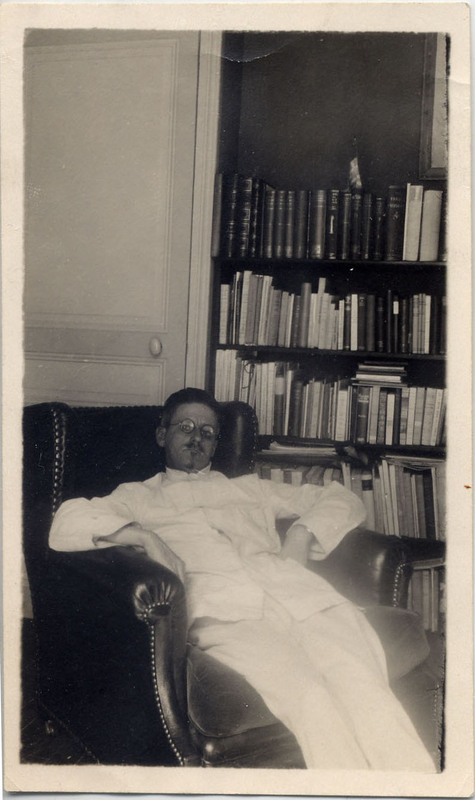James Joyce
An expatriate Irishman, James Joyce set his works in Dublin, but shunned the flourishing Irish literary revival. He wrote and worked intermittently as an English teacher, moving his family from Dublin to Austria to Italy to Switzerland. In 1906, as he finished Dubliners, he considered appending a short story "Ulysses" to the end of the work. Instead he embarked on a full length Ulysses in 1914, the year of the publication of Dubliners and the serialization of Portrait of the Artist as a Young Man, his first literary successes. Ulysses would not be finished until October of 1921, and was ultimately published in 1922 by Sylvia Beach's Shakespeare and Company, at the enter of Paris's flourishing literary scene. In the seven intervening years, a series of financial and legal struggles, perhaps even more than its own literary merits warranted, assured the apotheosis of Ulysses into the Western literary canon.
A master work of modernist literature, Ulysses used the structure of the Homeric Odyssey as a contrast to the lives of the Dublin working class. The entire 732-page work takes place during Dublin's "dailiest day possible," Thursday, June 16, 1904. The bleak lives of the Dublin working class formed a stark contrast to the heroic Odyssey, and Joyce's frank realism was too avant-garde for the cultural police of the day. As Joyce began writing Ulysses in Trieste, he was approached by expatriate American writer Ezra Pound, who worked as foreign editor of an American magazine, The Little Review. Pound sought material for serialization in the magazine, and Joyce agreed to submit installments of Ulysses with Pound as an intermediary. Serial rights were purchased by Little Review financial backer John Quinn, a New York attorney. From the first installment in 1918, censorship issues dogged Ulysses, eventually forcing a halt to its serialization in 1920. Copies of The Little Review were confiscated, and editors Margaret Anderson and Jane Heap were convicted in New York of publishing obscenity. Ulysses was subsequently banned in the U.S. until 1933, but copies often trickled in clandestinely as its suppression and subsequent publicity assured a wider demand for what was originally a relatively obscure avant-garde text.
Versions of Ulysses would pass through numerous hands before the first edition of 1922. During this period, Joyce embroidered continuously on the Odyssean theme, with textual discrepancies increasing as he added to various circulating copies. Compounded by unauthorized cuts, bowdlerizations, and pirated versions, Ulysses' convoluted publication history eventually obscured the author's intent: no definitive version of the text exists. The textual complexities have fueled a vast amount of scholarship. Joyce joked that Ulysses should "give Universities something to work on well into the next century." With the 1992 copyright expiration, there has been yet another explosion in Joycean scholarship and controversy. Whatever its other effects, the censorship battle over Ulysses certainly played a significant role in establishing its literary status. Along with the appearance of T.S. Eliot's The Wasteland in 1922, the publication of Ulysses signaled the peak year of modernism, and became the icon of a new literary era.

